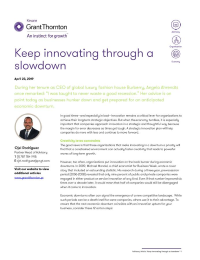-
Financial statements audits
Financial statement audits
-
Compliance audits
Compliance audits
-
Compilations and reviews
Compilations and audit
-
Agreed-upon procedures
Agreed-upon procedures
-
Tax compliance
Business Tax
-
Global mobility services
Through our global organisation of member firms, we support both companies and individuals, providing insightful solutions to minimise the tax burden for both parties.
-
Sales and use tax and indirect taxes
SUT/ VAT & indirect taxes
-
Tax incentives
Navigating the complex landscape of tax incentives in Puerto Rico can be challenging. Whether you're looking to benefit from the Export Services Act (Act 20), the Individual Investors Act (Act 22), or other incentives under Act 60, we provide tailored advice to help you maximize your tax benefits and ensure compliance. Let us help you unlock the potential of doing business in Puerto Rico.
-
Transfer Pricing
The laws surrounding transfer pricing are becoming ever more complex, as tax affairs of multinational companies are facing scrutiny from media, regulators and the public

-
Business consulting
Our business consulting services can help you improve your operational performance and productivity, adding value throughout your growth life cycle.
-
Business Risk Advisory
Risk is inevitable but manageable. We deliver relevant, timely and practical advices to aid organizations manage risk and improve business performance. We can help you identify, understand and manage potential risks to safeguard your business and comply with regulatory requirements.
-
Technology Advisory
We provide comprehensive solutions to safeguard your business and ensure operational resilience and compliance. Our expert team offers a range of technology advisory services designed to address your cybersecurity needs, enhance business continuity, and manage security effectively.
-
Transactional advisory services
Transactions are significant events in the life of a business – a successful deal that can have a lasting impact on the future shape of the organizations involved. Because the stakes are high for both buyers and sellers, experience, determination and pragmatism are required to bring deals safely through to conclusion.
-
Forensic and investigative services
At Grant Thornton, we have a wealth of knowledge in forensic services and can support you with issues such as dispute resolution, fraud and insurance claims.

During her tenure as CEO of global luxury fashion house Burberry, Angela Ahrendts once remarked: “I was taught to never waste a good recession.” Her advice is on point today as businesses hunker down and get prepared for an anticipated economic downturn.
In good times---and especially in bad---innovation remains a critical lever for organizations to achieve their long-term strategic objectives. But when the economy tumbles, it is especially important that companies approach innovation in a strategic and thoughtful way because the margin for error decreases as times get tough. A strategic innovation plan will help companies do more with less and continue to move forward.
Creativity loves constraints
The good news is that those organizations that make innovating in a downturn a priority will find that a constrained environment can actually foster creativity that leads to powerful waves of long-term growth.
However, too often, organizations put innovation on the back burner during economic downturns. In 2009, Michael Mandel, a chief economist for Business Week, wrote a cover story that included an astounding statistic. His research during a three-year, pre-recession period (2006-2008) revealed that only nine percent of public and private companies were engaged in either product or service innovation of any kind. Even if that number improved six times over a decade later, it would mean that half of companies would still be disengaged when it came to innovation.
Economic downturns often can signal the emergence of a new competitive landscape. While such periods can be a death knell for some companies, others use it to their advantage. To ensure that the next economic downturn coincides with an innovation upturn for your business, consider these 12 action steps:
A dozen action steps to take now
- Drive the innovation agenda. Truly successful innovation efforts always start at the top. CEOs must drive the innovation agenda during and through a downturn. Rather than slashing innovation budgets in a recessionary economy, CEOs should encourage management and teams to deliver market-leading products and services.
- Innovate with purpose. When facing a downturn, organizations would do well to prioritize investments in a way that moves beyond just profitability and centers on its core purpose.
- Be ruthless in prioritizing. When it comes to prioritizing innovation investments in a downturn, be strategic. Conduct a portfolio scan to uncover projects that are over budget, support unprofitable product lines, or are just not a good match with current or future customer needs. Avoid the temptation to prioritize short-term efforts that promise immediate payback over longer-term efforts with more questionable payback.
- Focus on “adjacency innovation”. Rather than making big bets on a single, radical innovation, companies can consider allocating resources to an “adjacency innovation” which can be less risky but still generate good pay-offs. Doing so requires using core competencies to move beyond the current business into a space that is adjacent. Examples include taking an existing product to a new customer segment or serving an existing customer with a new product.
- Move with your customers. Challenging economies expose unmet customer needs, making it a good time to identify opportunities for product or service development. Use this time to listen closely to the market and respond with innovation and research and development efforts where the market is speaking most loudly. Economic downturns can shift customer needs and buying habits which may or may not be permanent post-economic recovery.
- Explore new markets. When casting your net in down cycles, remember to fish where the fish are.
- Apply process innovation to reduce costs. Recessionary cycles can also be a good time to focus innovation efforts on reducing operating costs. Process innovation can improve production or delivery methods or result in significant changes in techniques, equipment and software. Increasing service while increasing margins can help you prepare for post-recession growth.
- Fail cheaply. It’s a given that companies that are truly innovative will fail. Those who don’t are simply playing it safe. If you are going to fail, make sure you do it as cheaply as possible. During a downturn, it’s especially critical to embrace the “build it, try it and fix it” mentality.
- Expand partnerships. Downturns demand a more collaborative approach to innovation. Partnerships with universities, innovation partners, suppliers, research labs, governments and even customers offer good opportunities to share costs, spread risk and combine resources.
- Invest in technology to drive repeatable innovation. Using the right technology, companies can ensure their innovation is a repeatable process. Aggressively scout technology and develop a broader partner and supplier network to identify and vet opportunities. Consider using short-term or ad-hoc teams to scan opportunities across your business ecosystem.
- Closely track Return on Innovation. In a sluggish economy, organizations have less room for error. Measuring closely the return on innovation efforts is critical to ensure any investments yield results that meet customer demand.
- Address innovation gaps. Undertake an assessment of the strengths and weaknesses of your innovation system. Fix the capability gaps now so that you can launch projects with fewer resources. When the upturn comes, this work will also pay dividends in terms of speed to market, quality of execution, and capacity.
Innovation thrives when faced with no other choice. In fact, history has proven that necessity truly is the mother of innovation. When faced with challenges, it’s human nature to want to hunker down and just protect the nest. But businesses intent on achieving long-term growth objectives need to build it bigger by innovating in and through a downturn. Those companies that emerge from recessionary cycles stronger and ahead of their competition understand the true value of innovation. Use this time to widen the gap.

